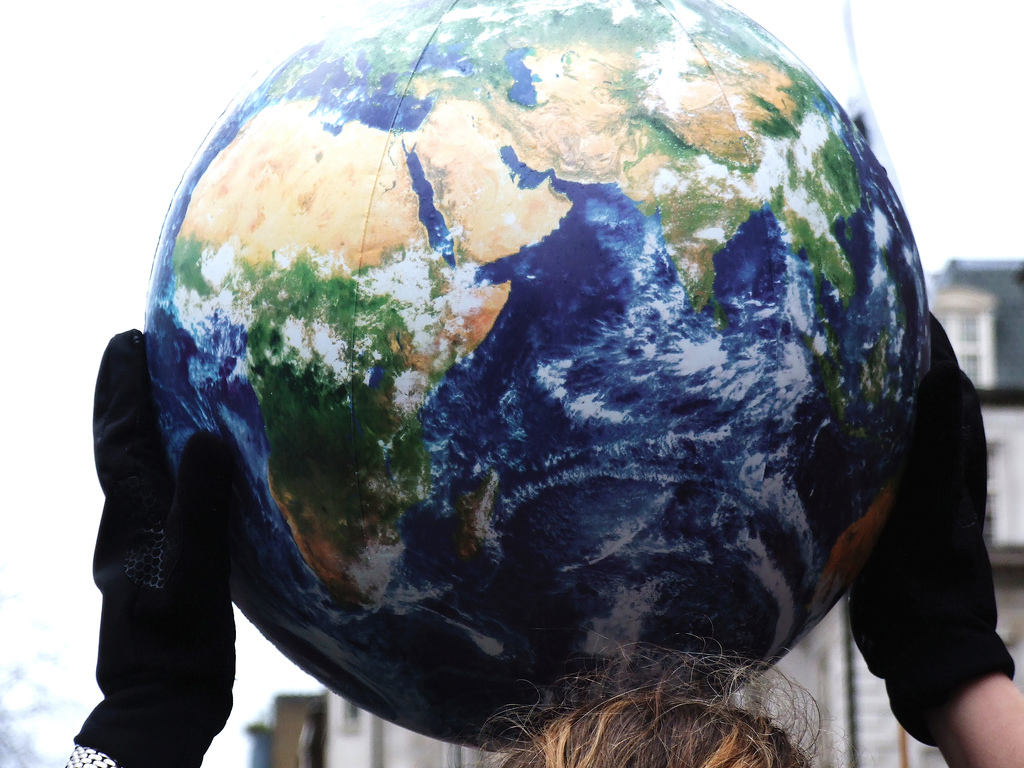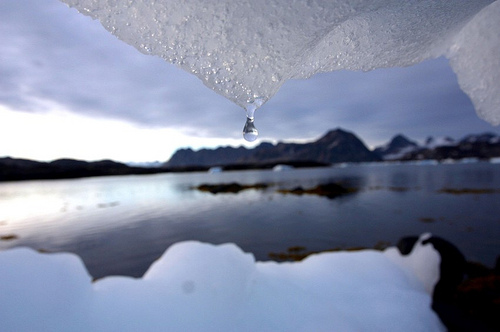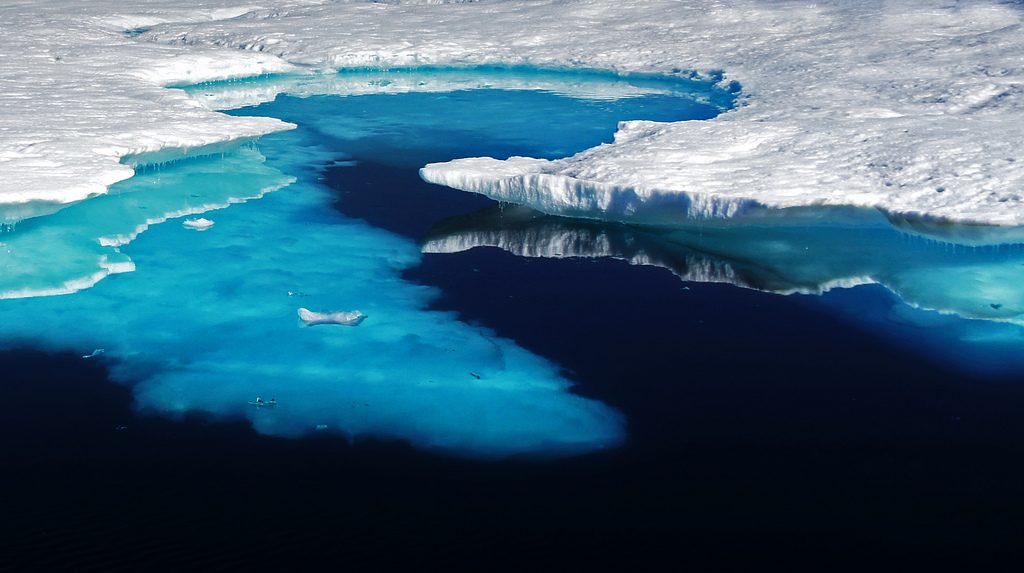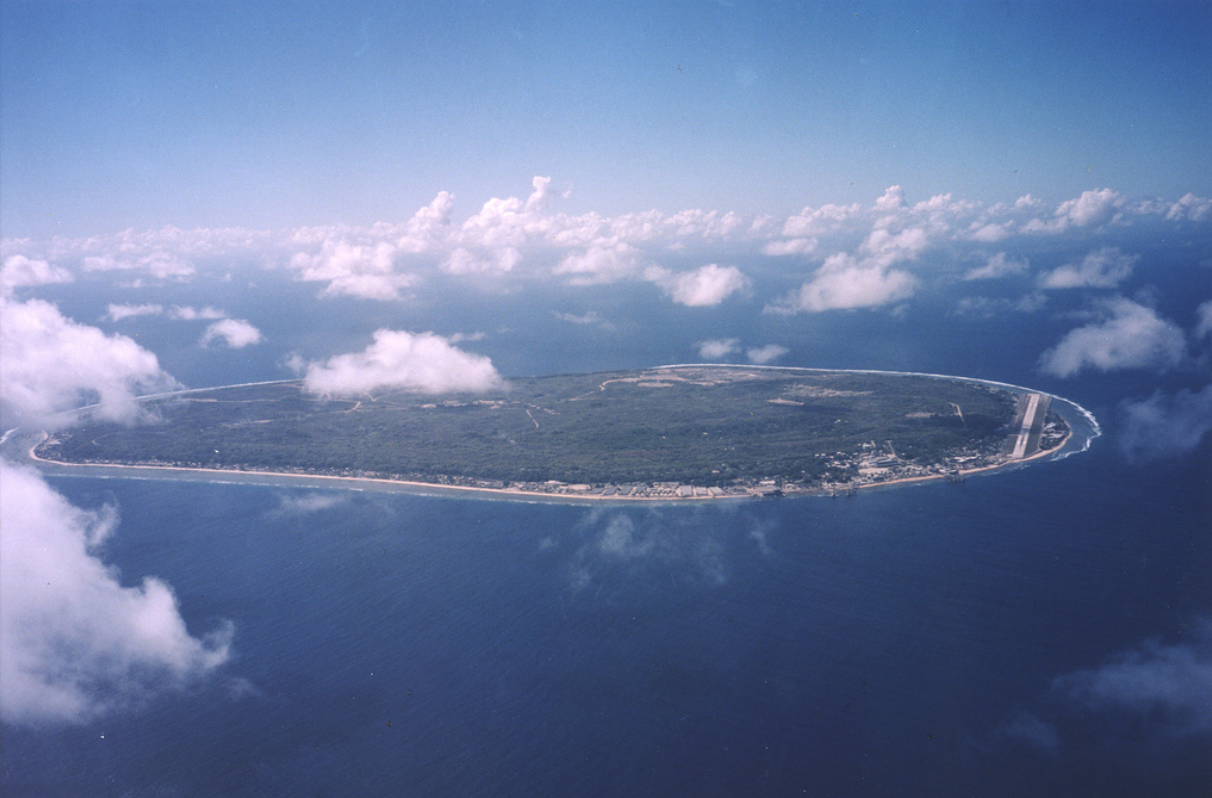If Fridays For Future has shown two things, they are that climate change is a serious issue and we are running out of time, and that the demands for change make adults, especially those in power positions, incredibly uncomfortable – perhaps not even because they believe the concerns of the youth to be unfounded but because they now that they are right. Yet, it is not only the youth that politicians try to brush off. For years, scientist who might hold the key, not to solving climate change but, to buying us some time have been – and still are – ignored.
Desperate Times
The Paris Agreement was celebrated as a landmark in the struggle to stop climate change. Yet, Climate Interactive predicts that even if all signatories would adhere to the aims agreed upon in the agreement, we can expect a temperature rise of 3.3 degrees by 2100. And even before that, possibly by 2030, scientists argue, the Arctic sea ice will disappear completely during summer. Already in January 2017, in the middle of winter, the growth of sea ice stopped in the Arctic and in other regions the ice cap even retreated.
Whereas the melting ice of Antarctica and Greenland affects sea levels, the melting of sea ice has different impacts. Since ice reflects sunlight and covers part of the sea’s surface, the reduction of sea ice will contributing to the warming of the seas allowing the water to store more heat and resulting in a local rise in temperature. This then causes more glaciers as well as greenhouse gas-storing permafrost to melt, increases general global warming and might even lead to disrupted weather patterns in other parts of the world beside destroying the habitat of many animals such as the Arctic cod and polar bears. To prevent this, Dr Hunt of the University of Cambridge says ‘[w]e have to be carbon zero by 2035. […] That means no flying, no container shipping, electric cars, cutting gas to our homes … All this has to happen worldwide in the next 20 years.’
Desperate Measures
There might be a way, however, to buy us some time: geoengineering. The logic behind this approach is that since we impact the environment in a negative way causing climate change, it should be possible to at least slow down, if not stop or reverse, it by impacting the environment with intention. We have reached a point at which climate concerns require our full attention and we should do our best to move towards a more environmentally friendly society. Especially with many not willing to commit to giving their best, geoengineering might prove a vital tool to delay the almost inevitable.
And yet, there still are sceptics. ‘They think we are playing God with the climate’, Dr Hunt explains, ‘but we have been playing God with the climate for 200 years by burning fossil fuels,” he says. “Just because we have messed it up it doesn’t mean we can’t fix it.’ Important to note is that geoengineering is not a carte blanche to blindly continue on the destructive way we are on. Geoengineering without more fundamental changes in environmental politics is much ‘like a car accelerating towards a brick wall. We are not accelerating as fast as we were, but we are also not putting our foot on the brake.’
Refreezing the Arctic
The melting Arctic ice is only one of many climate change related problems. It is simultaneously one of many problems that scientists try to tackle with geoengineering. Their approach is based on the question: What if we could refreeze the Arctic? At the moment, the ice cap in many places is no thicker than two or three metres with a tendency to become even thinner due to global warming. If it were possible to add a couple of layers to the sea ice during the winter months, it might be possible to prevent them vanishing during the summer.
The suggested method to create an extra metre of Arctic ice is seemingly simple. Giant wind-powered pumps on top of buoys would be placed in the Arctic Sea. There, they would transfer water from the sea to the top of the ice where it freezes and thickens the ice layer. To achieve this in 10% of the Arctic, the minimum of what is needed to make a difference, an estimated number of 10 million water pumps would be needed. In addition, the idea to build large mounds on the sea floor is circulating. These mounds would be constructed out of materials such as sand or rocks with the purpose to prevent warm water from melting glaciers from the bottom up. Yet, it is uncertain if this technique could be applied to an area as large as the Arctic.
Save the Earth, Save Ourselves
From refreezing the Arctic, over sucking carbon over the air to blocking sun rays with big mirrors in space, there is no lack of creative ideas in the field of geoengineering. Another idea to counteract the reduction of sea ice includes artificially whitening the Arctic. The plan entertains the thought of using light-coloured aerosol particles to reflect sun rays. Alternatively, water could potentially be used to create sunlight-reflecting clouds over the Arctic by distributing the water in the atmosphere above.
Yet, whether it is chemically reversing the acidification of the oceans or copying volcanic eruptions by injecting stratospheric sulfate aerosols into the atmosphere to cool down the Earth, most geoengineering approaches share a common problem. Due to potential unanticipated factors that might have a counterproductive effect more research is needed. For instance, if we were to try to reduce the world climate by two degrees and accidentally end up lowering it by four degrees, we might have to deal with a whole new set of environmental crises.
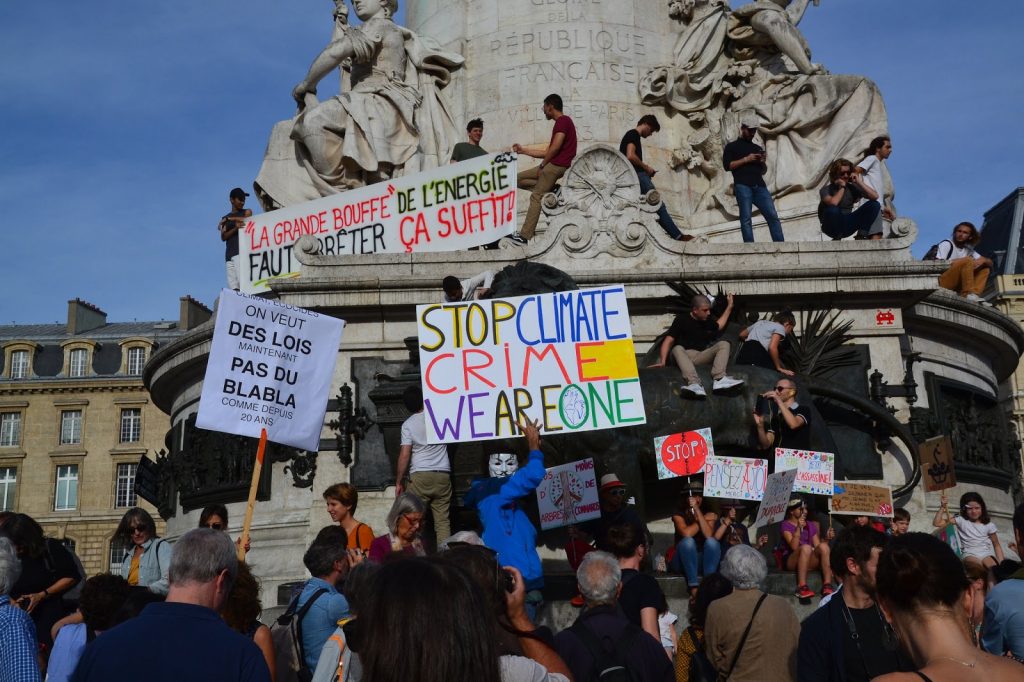
With time running out, what we need is more awareness of the existence of these approaches, especially among politicians, so that there can be more research and an eventual implementation of relatively risk-free geoengineering projects. However, this is not nearly enough. We have to finally start recognising climate change as the threat it is and draw the necessary consequences not only in words but in action – and by ‘we’ I mean not only society in general but especially those in a power position enabling them to enforce change. If not to save the Earth, which will most likely survive us anyway, then for ourselves.
by Merle Emrich
Photo Credits
Global Climate Change, Jas n, CC BY-NC 2.0
Iceberg 6, DorkyMum, CC BY-Nc-ND 2.0
What If Global Temperatures Rose by 4 Degrees Celsius?, klem@s, CC BY-NC-ND 2.0
blue ice, mariusz kluzniak, CC BY-NC-ND 2.0
Climate change protesters march in Paris, Jeanne Menjoulet, CC BY 2.0
